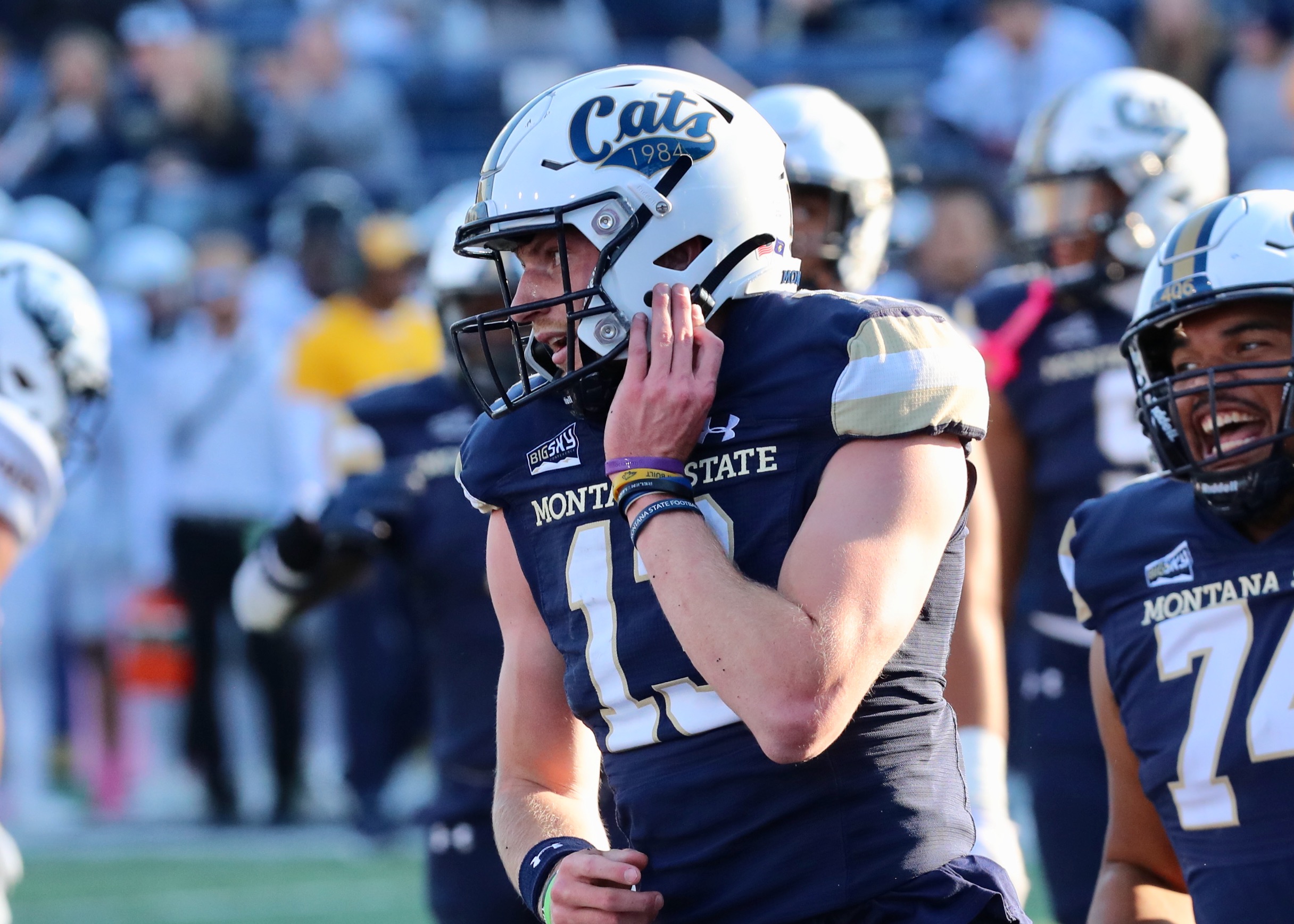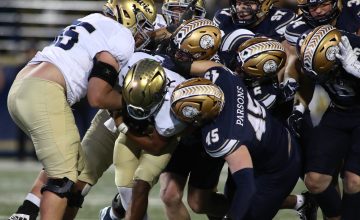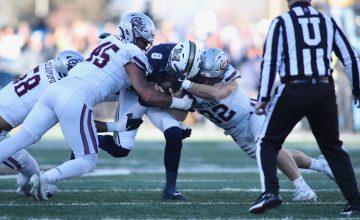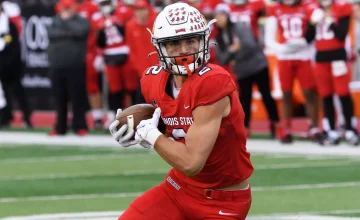Montana State will be replacing one of, if not the most popular and talented players it has ever had in 2025, which has FCS followers across the country wondering where MSU will turn for its next starting quarterback.
The Bobcats are faced with an unenviable task of turning over Tommy Mellott’s record-setting reins to a new man under center. Whoever that is almost certainly won’t be able to replicate Mellott’s on and off field production, for he was a leader of unparalleled ability and his skills as both a passer and runner were among the best. With 4.3 40-yard dash speed and great agility, he was able outrun and outmaneuver nearly every player on the field during his time at MSU.
“Like I’ve been saying, we’re not going to have another Tommy Mellott from a style perspective,” MSU head coach Brent Vigen said in choosing his words carefully. “We need to be able to continue to adjust.”
Perhaps not “a style perspective,” but Vigen left room for the next quarterback to be as productive.
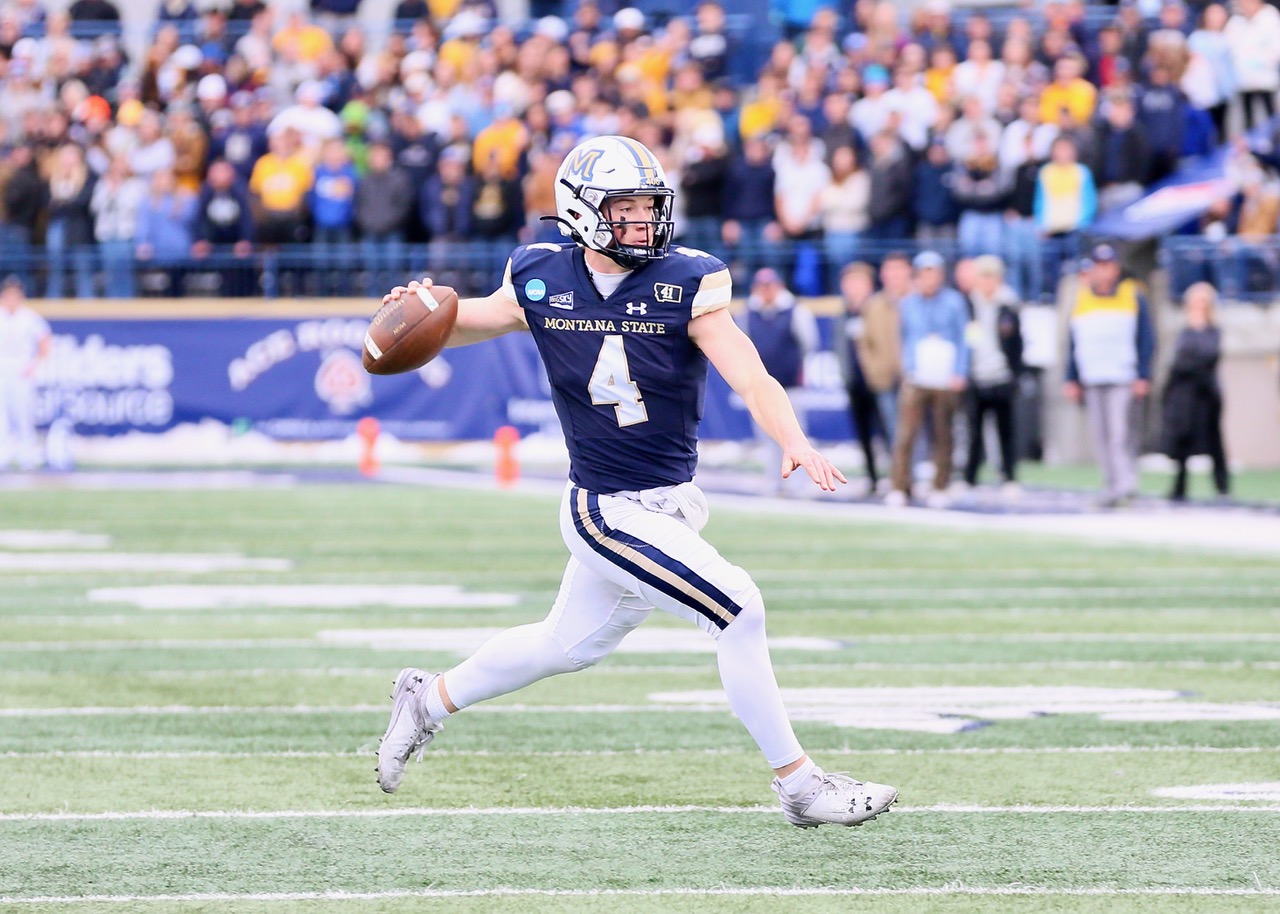
To wit, the best option for replacing a player of Mellott’s stature probably includes an approach that finds improvement across the board, instead of looking for another quarterback that can replicate his play. The Bobcats are apt to find other ways to replicate their production. Mellott is arguably the greatest running quarterback in the history of the Big Sky Conference, so the Bobcats will need to find other ways to move the ball if they’re to maintain the 480 yards of total offense per game that they enjoyed last season.
MSU is already working on doing just that as head coach Brent Vigen brought in an offensive coordinator in Pete Sterbick, who has a history of incorporating the passing game into the mix more than MSU has done in the recent past. One plus for Sterbick is that he has the advantage of not having to make changes to an existing starting quarterback.
“(Sterbick) brings a little bit of balance for both sides, the running game and the passing game,” quarterback Justin Lamson, who’s one of the leading quarterbacks for the starting position. “It’s pretty cool that the linemen here pride themselves off the run game. That’s something that I think is super important. If you can run with the ball, you can do a lot of things.”
In an extensive interview at the opening of preseason camp, Sterbick didn’t mention Mellott by name.
“In some ways, it’s not difficult because if you have had a guy that’s been entrenched in that offense and if I was going to bring in some new things, you would have someone that would have to change what they were doing as a starter,” Sterbick said. “I think that’s one advantage coming in is having guys that are going to be open to whatever I want to do that’s different.
“They’re going to be more open minded instead of being so well-versed in the offense that they don’t want anything to change. And I haven’t seen anything like that from the guys since I’ve been here.”

Organically, the Bobcats return a defense loaded with players with strong abilities and extensive playing time and the running game that has led the Big Sky Conference for five straight years. Both of those facets take pressure off quarterbacks and the timing of MSU’s improvement on the defensive side of the ball – they’ve gone from allowing 26.6 points and 360 yards per game in 2022 to 18.3 and 311.7 in 2024 – couldn’t be better.
Vigen also brought in Lamson, a player Vigen was familiar with out of the California prep ranks who signed with Syracuse and then transferred to Stanford before landing at MSU, to compete with 2024 backups Chance Wilson and Patrick Duchein Jr. The Bobcats also signed receiver Chris Long from Rutgers to bolster their aerial attack. Despite that, they probably won’t expect the passing game to take over all the lost production from the quarterback run game.
MSU’s run game has produced without Mellott – and/or Sean Chambers – at the position. Both players were tremendous running quarterbacks in their own ways and integral to the team’s success in the ground attack. But prior to them, the Bobcats were the top running team in the league, even with less mobile quarterbacks Tucker Rovig in 2019 and Matt McKay in 2021 at the helm.
In 2019, MSU averaged 258 yards per game at 5.7 per carry with Rovig averaging less than three yards per game and in 2021 they were good for 220 per game and 5.2 per carry with McKay getting under 30 yards per game. Travis Jonsen (2019) and Mellott (2021) did play considerable amounts in those years, but neither was the primary starter until Mellott took over to start the FCS playoffs. Jonsen took a lot of his carries from a wide receiver position and rarely passed the ball when he did go under center. Defenses were able to key on him when he took snaps.
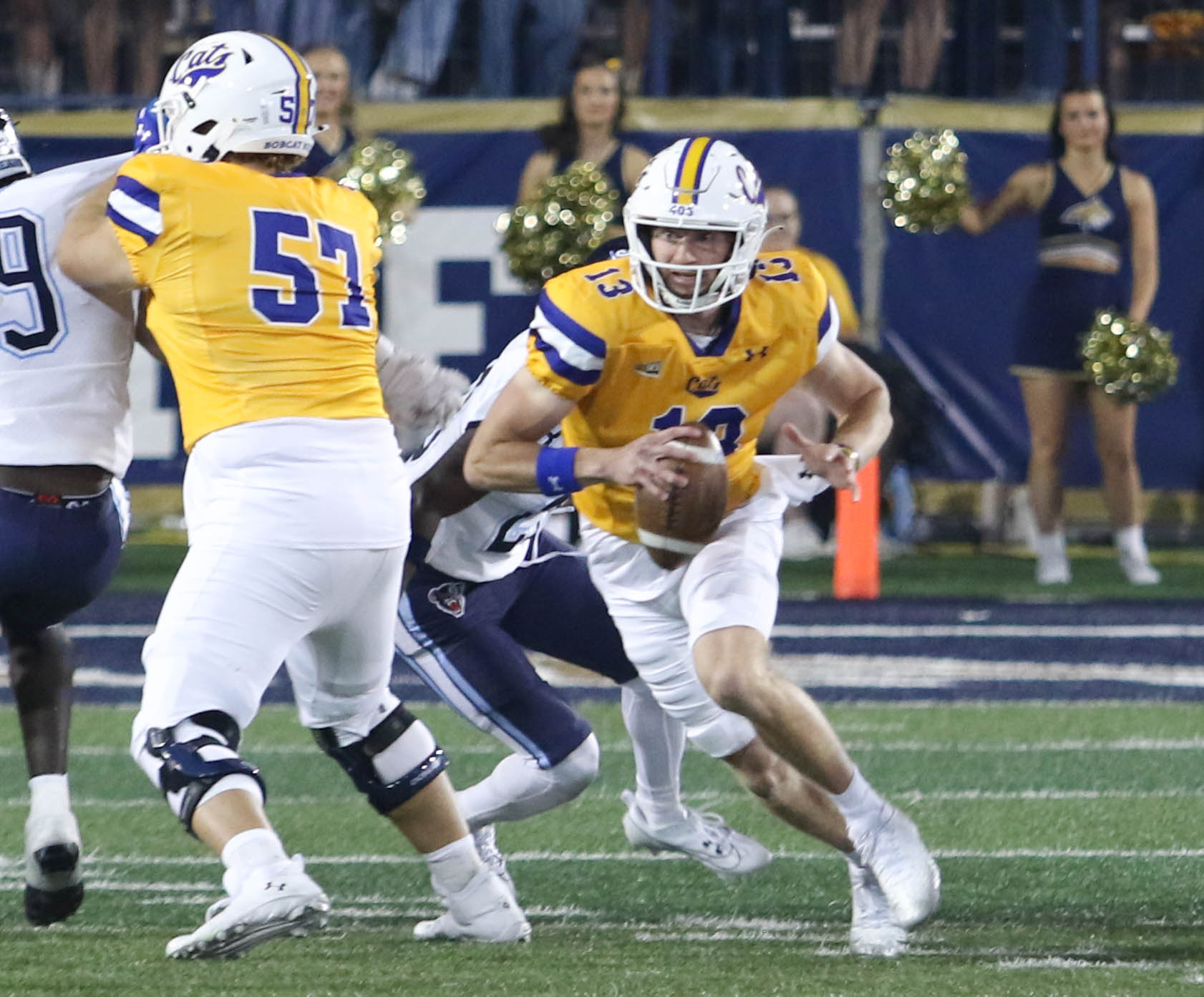
Lamson has proven to be a solid runner, especially in short yardage situations and Wilson, is one of the fastest players on the team, so MSU will still get some production from its quarterbacks in the run game.
Areas that Mellott had trouble with at times were picking out open receivers downfield and being decisive about who he would throw to. Despite that, he led the Big Sky in passing efficiency, due in large part to MSU getting about 65 percent of its offense from the run. MSU was one of only four Big Sky teams to rush for more than it passed with a differential of almost 1,800 yards. The next closest in terms of differential was Eastern Washington, which had just 173 more yards rushing than passing.
Most of Mellott’s success in terms of completion percentage and efficiency came on short passes that were turned into long gains. At 6-foot, plays were usually designed for him to roll out from the pocket to have a better look at deep routes. Lamson (6-2), Wilson (6-3) and Patrick Duchein (6-2) have the physical advantage to see over the offensive line better than Mellott. This height difference could enable the Bobcats to keep their quarterbacks in the pocket and utilize short routes over the middle.
The question now is: will what Sterbick and the new quarterback bring to the table be enough?
The Bobcats have entered preparations for their season opener against the University of Oregon in fabled Autzen Stadium in Eugene, Ore. That game is slated for Saturday, August 30.


